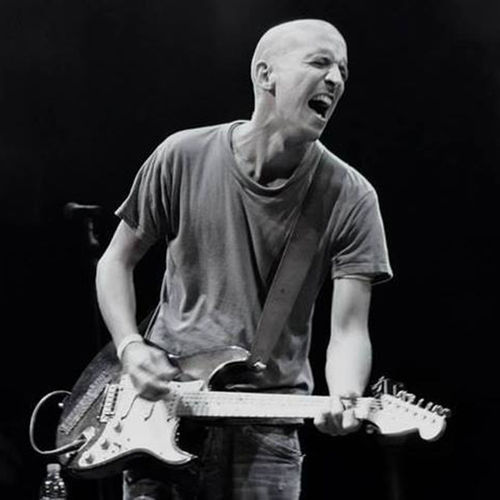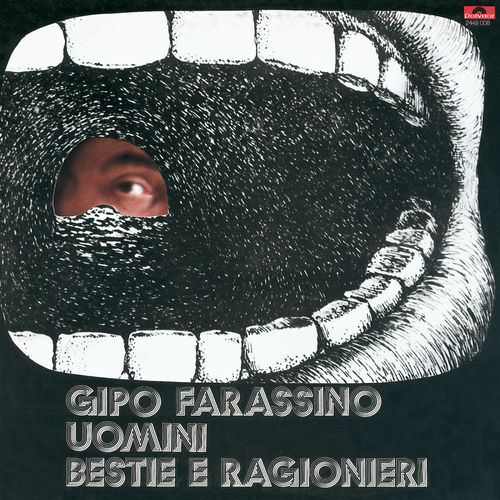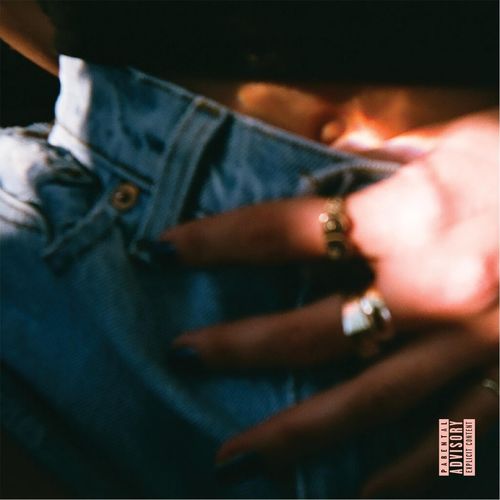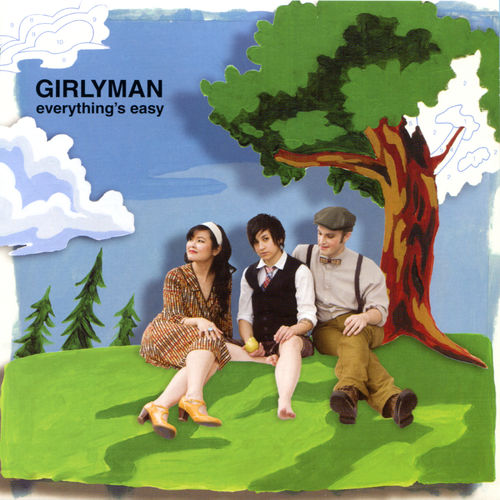
Biography:
Giorgio Gaber, true name Giorgio Gaberscik, born January 25, 1939 in Milan, died January 1, 2003 in Montemagno near Camaiore (Lucca), was an Italian actor, composer, and musician. But truly, no definition can completely suit a personality like Gaber, affectionately called "il Signor G" (Mister G) by his fans. He was also a good guitar player, and author of the first rock song in Italian (Ciao ti dirò, 1958).
Very appreciated have been his performances like author and actor of theatre: he was father
Read more on Last.fm

Other songs:
- Bambolina
- Barbera E Champagne
- Cerco Un Gesto Naturale
- Destra Sinistra
- E Sabato
- Far Finta Di Essere Sani
- I Reduci
- Il Dilemma
- Il Riccardo
- Io Non Mi Sento Italiano
- L Odore
- La Ballata Del Cerutti
- La Bugia
- La Risposta Al Ragazzo Della Via Gluck
- Lillogica Allegria
- Lo Shampoo
- Non Arrossire
- Torpedo Blu
- Trani A Gogo
- Unidea
Four years of hard work!This month of May we celebrated four years on the air. We continue working on the dissemination of this wonderful instrument, thank you for participating in our story!
Note for English speakers: this is a very nice italian song. I know It's quite unlikely
an English speaker any will be trying to learn it, but just in case you may find below
correspondence between Italian and English chords.
L'illogica allegria
Giorgio Gaber
By: [email protected]
RE2 RE RE2 SIb5dim/RE
RE2 RE RE2 SIb5dim/RE
RE2 RE RE2 SIb5dim/RE
Da solo,
RE2 RE RE2 SIb5dim/RE
lungo l'autostrada,
RE2 RE RE2 SIb5dim/RE
alle prime luci del mattino,
RE2 RE RE2 SIb5dim/RE
a volte spengo anche la radio
RE2 RE RE2
e lascio il mio cuore incollato al finestrino.
FA DO RE RE4 RE(no3) RE
Lo so, del mondo e anche del resto,
FA DO RE RE4 RE RE/DO#
lo so, che tutto va in rovina.
SI- SOL SOL4 LA
Ma di mattina, quando la gente dorme
SOL SOL4 LA
col suo normale malumore,
RE RE4 RE LA
mi può bastare un niente,
SOL SOL4 LA
forse un piccolo bagliore,
SOL SOL4 LA
un'aria già vissuta,
MI-7 LA LA7
un paesaggio, che ne so...
RE RE2 RE RE4 RE RE2 RE
E sto bene,
SOL SOL4 RE RE2 RE RE4 RE RE2 RE SOL
io sto bene come uno quando sogna,
SOL4 SI-
non lo so se mi conviene
LA LA7 MI- MI-7 LA7
ma sto bene, che vergogna...
RE RE2 RE RE4 RE RE2 RE SOL
Io sto bene,
SOL4 RE RE2 RE RE4 RE RE2 RE SOL
proprio ora, proprio qui,
SOL4 SI-
non è mica colpa mia
LA LA7 MI- MI-7 LA7
se mi capita così.
SOL RE
È come un'illogica allegria
MI-7
di cui non so il motivo,
RE LA7
non so che cosa sia.
SOL RE
È come se improvvisamente
MI-7 SOL
mi fossi preso il diritto
MI-7 LA LA7
di vivere il presente.
RE RE2 RE RE4 RE RE2 RE SOL
Io sto bene...
SOL4 RE RE2 RE RE4 RE RE2 RE SOL
na na nai na nai na na,
SOL4 SI-
quest'illogica allegria,
LA LA7 MI- MI-7 LA LA7
proprio ora, proprio qui.
RE2 RE RE2 SIb5dim/RE
Da solo,
RE2 RE RE2 SIb5dim/RE
lungo l'autostrada,
RE2 RE RE2 SIb5dim/RE RE
alle prime luci del mattino...
Note:
Questa dovrebbe essere esattamente come la faceva Gaber (o giù di lì).
I passaggi veloci sul RE (RE RE2 RE RE4, etc.) sono i classici giochetti per migliorare
che si fanno premendo e togliendo alternativamente medio e mignolo sul mi cantino
principale. Chi vuole può suonare semplicemente il RE maggiore, ma l’armonia risulterà
piatta.
Stesso discorso vale per i passaggi SOL SOL4, LA LA7, MI- MI-7.
Invece l’accordo SIb5dim/RE non può assolutamente essere sostituito, perché è proprio
che alternandosi con il RE2 crea la magica, bellissima armonia iniziale (a dispetto del
complicato è comunque facilissimo da suonare).
Please, note:
It should be exactly as Gaber used to play it (or something like that). The fast
on D (D Dsus2 D Dsus4, etc) are the typical little tricks one does to make the armony better
and leaving the 3rd and 5th finger on the first string of the main chord. If one wants
he may just play a standard D, but the armony will come out a bit more boring.
It's the same for the G Gsus4, A A7, Em Em7 sequences.
The Bb-5/D chord should absolutely be played the way it is instead, as it is just that
giving a magical beautiful starting sound, played in the Bb-5/D Dsus2 sequence (though
odd name is however very easy to do).
Accordi usati:
SIb5dim/RE
e|--0--|
B|--3--|
G|--3--|
D|--0--|
A|--X--|
E|--X--|
RE4
e|--3--|
B|--3--|
G|--2--|
D|--0--|
A|--X--|
E|--X--|
RE(no3)
e|--5--|
B|--3--|
G|--2--|
D|--0--|
A|--X--|
E|--X--|
SOL4
e|--3--|
B|--1--|
G|--0--|
D|--0--|
A|--X--|
E|--3--|
RE/DO#
e|--2--|
B|--3--|
G|--2--|
D|--0--|
A|--4--|
E|--X--|
LA7
e|--0--|
B|--2--|
G|--0--|
D|--2--|
A|--0--|
E|--X--|
RE2
e|--0--|
B|--3--|
G|--2--|
D|--0--|
A|--X--|
E|--X--|
MI-7
e|--0--|
B|--3--|
G|--0--|
D|--2--|
A|--2--|
E|--0--|
Italian English
RE2 = Dsus2
RE = D
SIb5dim/RE = Bb-5/D
FA = F
DO = C
RE4 = Dsus4
RE(no3) = D5
RE/DO# = D/C#
SI- = Bm
SOL = G
SOL4 = Gsus4
LA = A
MI-7 = Em7
MI- = Em
an English speaker any will be trying to learn it, but just in case you may find below
correspondence between Italian and English chords.
L'illogica allegria
Giorgio Gaber
By: [email protected]
RE2 RE RE2 SIb5dim/RE
RE2 RE RE2 SIb5dim/RE
RE2 RE RE2 SIb5dim/RE
Da solo,
RE2 RE RE2 SIb5dim/RE
lungo l'autostrada,
RE2 RE RE2 SIb5dim/RE
alle prime luci del mattino,
RE2 RE RE2 SIb5dim/RE
a volte spengo anche la radio
RE2 RE RE2
e lascio il mio cuore incollato al finestrino.
FA DO RE RE4 RE(no3) RE
Lo so, del mondo e anche del resto,
FA DO RE RE4 RE RE/DO#
lo so, che tutto va in rovina.
SI- SOL SOL4 LA
Ma di mattina, quando la gente dorme
SOL SOL4 LA
col suo normale malumore,
RE RE4 RE LA
mi può bastare un niente,
SOL SOL4 LA
forse un piccolo bagliore,
SOL SOL4 LA
un'aria già vissuta,
MI-7 LA LA7
un paesaggio, che ne so...
RE RE2 RE RE4 RE RE2 RE
E sto bene,
SOL SOL4 RE RE2 RE RE4 RE RE2 RE SOL
io sto bene come uno quando sogna,
SOL4 SI-
non lo so se mi conviene
LA LA7 MI- MI-7 LA7
ma sto bene, che vergogna...
RE RE2 RE RE4 RE RE2 RE SOL
Io sto bene,
SOL4 RE RE2 RE RE4 RE RE2 RE SOL
proprio ora, proprio qui,
SOL4 SI-
non è mica colpa mia
LA LA7 MI- MI-7 LA7
se mi capita così.
SOL RE
È come un'illogica allegria
MI-7
di cui non so il motivo,
RE LA7
non so che cosa sia.
SOL RE
È come se improvvisamente
MI-7 SOL
mi fossi preso il diritto
MI-7 LA LA7
di vivere il presente.
RE RE2 RE RE4 RE RE2 RE SOL
Io sto bene...
SOL4 RE RE2 RE RE4 RE RE2 RE SOL
na na nai na nai na na,
SOL4 SI-
quest'illogica allegria,
LA LA7 MI- MI-7 LA LA7
proprio ora, proprio qui.
RE2 RE RE2 SIb5dim/RE
Da solo,
RE2 RE RE2 SIb5dim/RE
lungo l'autostrada,
RE2 RE RE2 SIb5dim/RE RE
alle prime luci del mattino...
Note:
Questa dovrebbe essere esattamente come la faceva Gaber (o giù di lì).
I passaggi veloci sul RE (RE RE2 RE RE4, etc.) sono i classici giochetti per migliorare
che si fanno premendo e togliendo alternativamente medio e mignolo sul mi cantino
principale. Chi vuole può suonare semplicemente il RE maggiore, ma l’armonia risulterà
piatta.
Stesso discorso vale per i passaggi SOL SOL4, LA LA7, MI- MI-7.
Invece l’accordo SIb5dim/RE non può assolutamente essere sostituito, perché è proprio
che alternandosi con il RE2 crea la magica, bellissima armonia iniziale (a dispetto del
complicato è comunque facilissimo da suonare).
Please, note:
It should be exactly as Gaber used to play it (or something like that). The fast
on D (D Dsus2 D Dsus4, etc) are the typical little tricks one does to make the armony better
and leaving the 3rd and 5th finger on the first string of the main chord. If one wants
he may just play a standard D, but the armony will come out a bit more boring.
It's the same for the G Gsus4, A A7, Em Em7 sequences.
The Bb-5/D chord should absolutely be played the way it is instead, as it is just that
giving a magical beautiful starting sound, played in the Bb-5/D Dsus2 sequence (though
odd name is however very easy to do).
Accordi usati:
SIb5dim/RE
e|--0--|
B|--3--|
G|--3--|
D|--0--|
A|--X--|
E|--X--|
RE4
e|--3--|
B|--3--|
G|--2--|
D|--0--|
A|--X--|
E|--X--|
RE(no3)
e|--5--|
B|--3--|
G|--2--|
D|--0--|
A|--X--|
E|--X--|
SOL4
e|--3--|
B|--1--|
G|--0--|
D|--0--|
A|--X--|
E|--3--|
RE/DO#
e|--2--|
B|--3--|
G|--2--|
D|--0--|
A|--4--|
E|--X--|
LA7
e|--0--|
B|--2--|
G|--0--|
D|--2--|
A|--0--|
E|--X--|
RE2
e|--0--|
B|--3--|
G|--2--|
D|--0--|
A|--X--|
E|--X--|
MI-7
e|--0--|
B|--3--|
G|--0--|
D|--2--|
A|--2--|
E|--0--|
Italian English
RE2 = Dsus2
RE = D
SIb5dim/RE = Bb-5/D
FA = F
DO = C
RE4 = Dsus4
RE(no3) = D5
RE/DO# = D/C#
SI- = Bm
SOL = G
SOL4 = Gsus4
LA = A
MI-7 = Em7
MI- = Em









